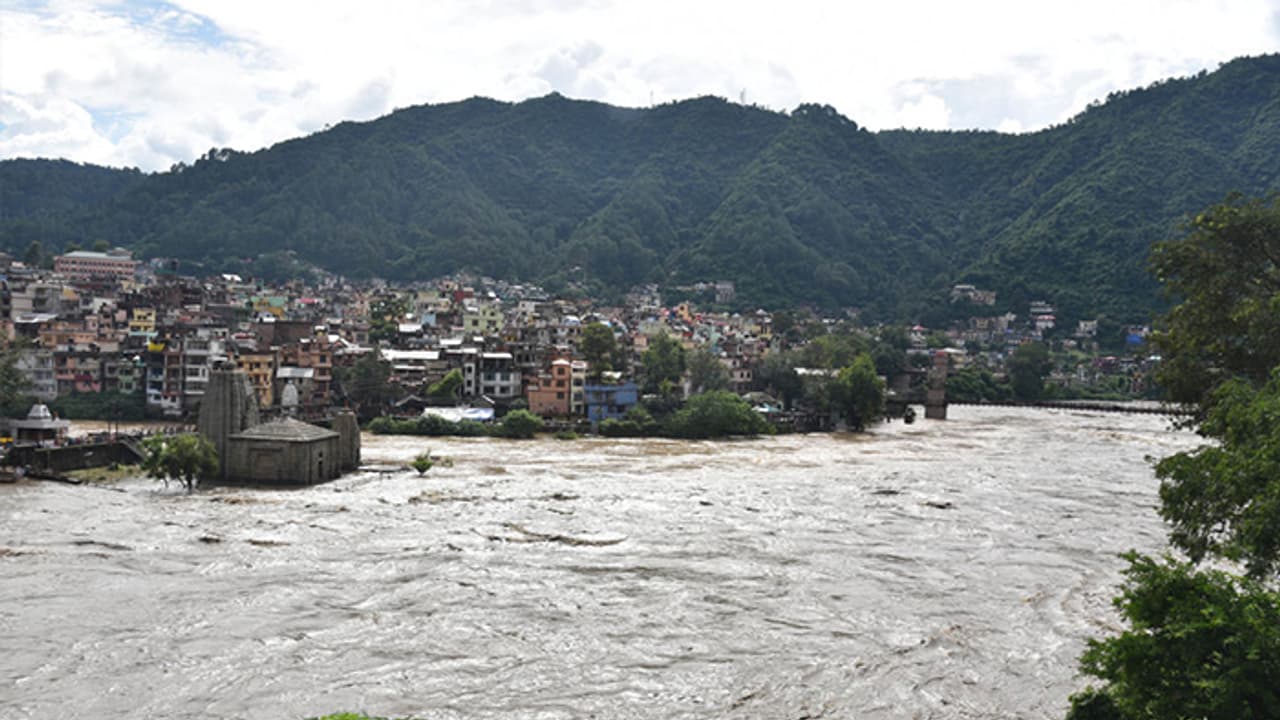The India Meteorological Department (IMD) has said the clash of two phenomena — Cyclone Daye from the Bay of Bengal and a Western Disturbance coming from Pakistan — has resulted in heavy rains, which is 454 per cent more than the normal for this period
New Delhi: At least 11 people were killed in separate rain-related incidents and hundreds were evacuated after incessant rains triggered flash floods and landslides in the northern states of Jammu and Kashmir, Himachal Pradesh and Haryana.
The India Meteorological Department (IMD) has said the clash of two phenomena — Cyclone Daye from the Bay of Bengal and a Western Disturbance coming from Pakistan — has resulted in heavy rains, which is 454 per cent more than the normal for this period.
It has predicted fresh bouts of ‘severe’ rainfall across the country, sending states across the monsoon belt on high alert. A 'red alert' has been issued in Punjab.
The government agency has also predicted very heavy rainfall at isolated places over Arunachal Pradesh, Assam, Meghalaya, Himachal Pradesh, Uttarakhand, Haryana, Chandigarh, Delhi, Uttar Pradesh, and heavy rainfall over Andaman and Nicobar Islands, Punjab, Rajasthan, Bengal, Sikkim, Karnataka, Kerala and Tamil Nadu.
This is the second such alert this year after early monsoon and unprecedented rainfall wreaked havoc in Kerala and other southern parts of India since May, triggering massive floods and devastating landslides.
People missing
Around 45 people, including 35 IIT-Roorkee students, were reportedly missing in Lahaul and Spiti. Rajvir Singh, father of one of the students Ankit Bhati, said they had gone for trekking to Hamta trekking pass in Kullu and were supposed to return to Manali. But were out of reach.
Another group of eight people, including a woman from Brunei Sanjida Tuba, a man from the Netherlands Abby Lim and six Indian nationals — Priyanka Vora, Payal Desai, Dipika, Divya Aggarwal, Abhinav Chandel and Ashok — have gone missing from the same region.
Jammu and Kashmir
According to reports, five members of a family, including three minors, died on Monday when their house collapsed after a landslide in the Doda district. The state authorities have issued fresh alerts in the state after rivers were flowing above the danger mark following heavy rainfall in the area. Local authorities rescued people from various parts of the district and rehabilitated them to safety.
Himachal Pradesh
Though skies have cleared in Chandigarh and many parts of Himachal, including Kullu, IMD has predicted light to moderate rainfall in Kullu, Una, and Hamirpur districts of Himachal Pradesh.
On Monday, 378 roads were closed due to landslides — 213 roads in Shimla zone, 49 in Mandi zone, 29 in Hamirpur and 86 in Kangra zone. Major traffic snarls on highways have been reported as most roads are partially damaged. Traffic remained suspended on NH 21 between Kullu and Manali. Movement is likely to be restored later in the day as an alternative route is being prepared at Katha. Schools and colleges will remain closed in the state today.
Chardham yatra disrupted
Due to heavy rainfalls in the Kedar Valley, roads carrying pilgrims have been closed to avoid any untoward incident.
Punjab
A 'red alert' has been issued in Punjab. The officials have said that 49,000 cusecs water will be released from Pong Dam in Himachal today. The Bhakra Baes Management Board has issued an advisory yesterday to the state government saying it will release "excess" water from the dam into the Beas river.
The Indian Army is on high alert in Punjab after the river Beas has swollen along with rivers Ravi and Sutlej. The army has been asked to keep their flood relief columns ready.
Monsoons to recede
Sources in IMD said the June-September monsoon rains are likely to start withdrawing from the northwest from Saturday. The monsoon usually starts withdrawing in the first week of September, but this year it has been delayed by nearly four weeks. A change in the wind pattern is likely over west Rajasthan from Thursday and monsoon withdrawal could start from Saturday, IMD said in a statement.
The monsoon, which delivers 70% of India’s annual rainfall, is critical for 263 million farmers and their crops like rice, sugarcane, corn, cotton and soybean, because nearly half of the country’s farmland lacks irrigation. The country has so far received 9% lower rainfall than normal in the current monsoon season.
